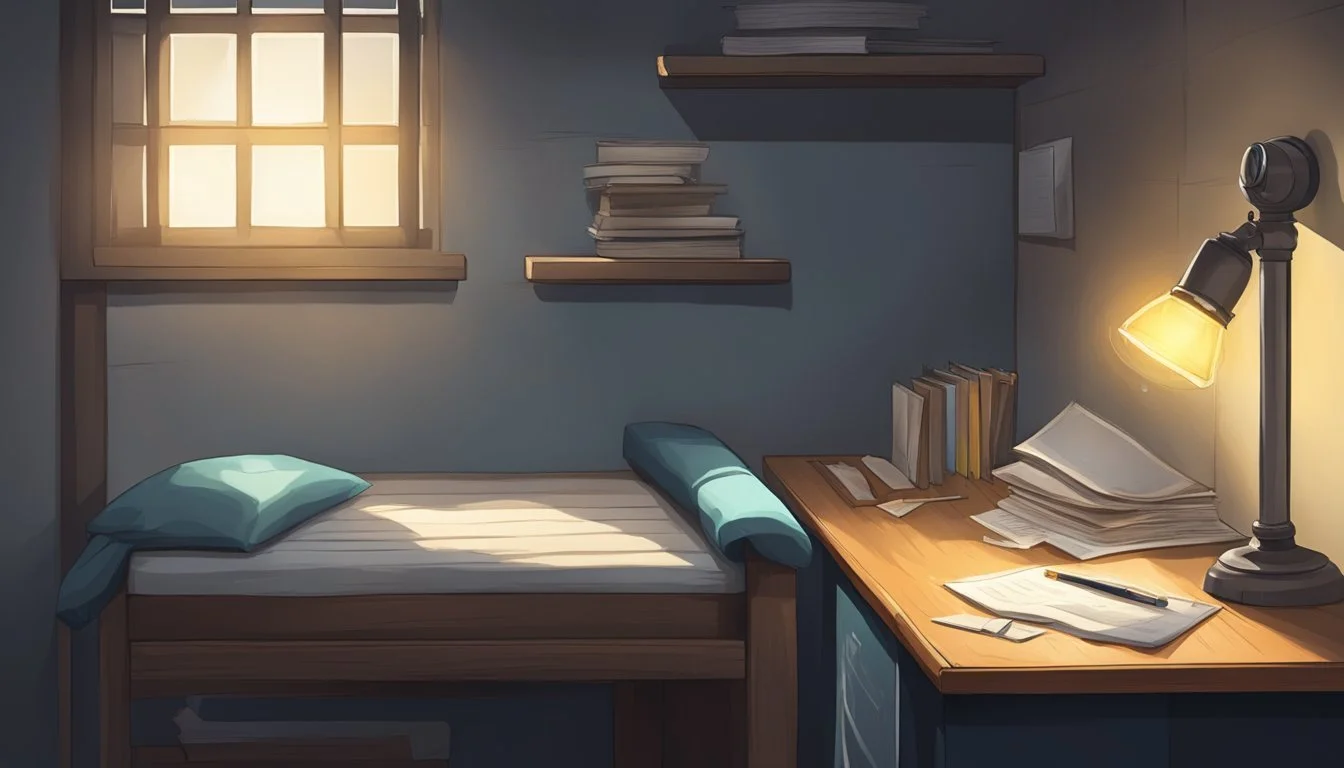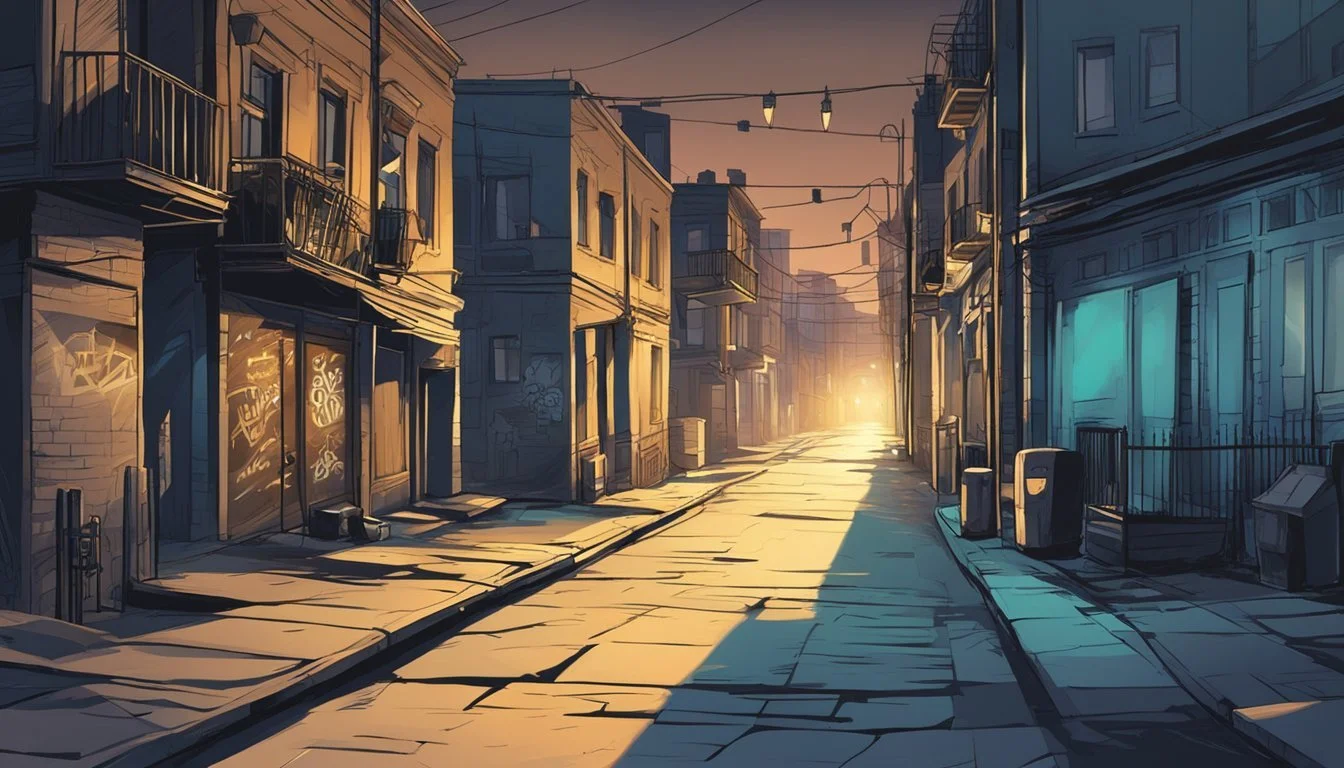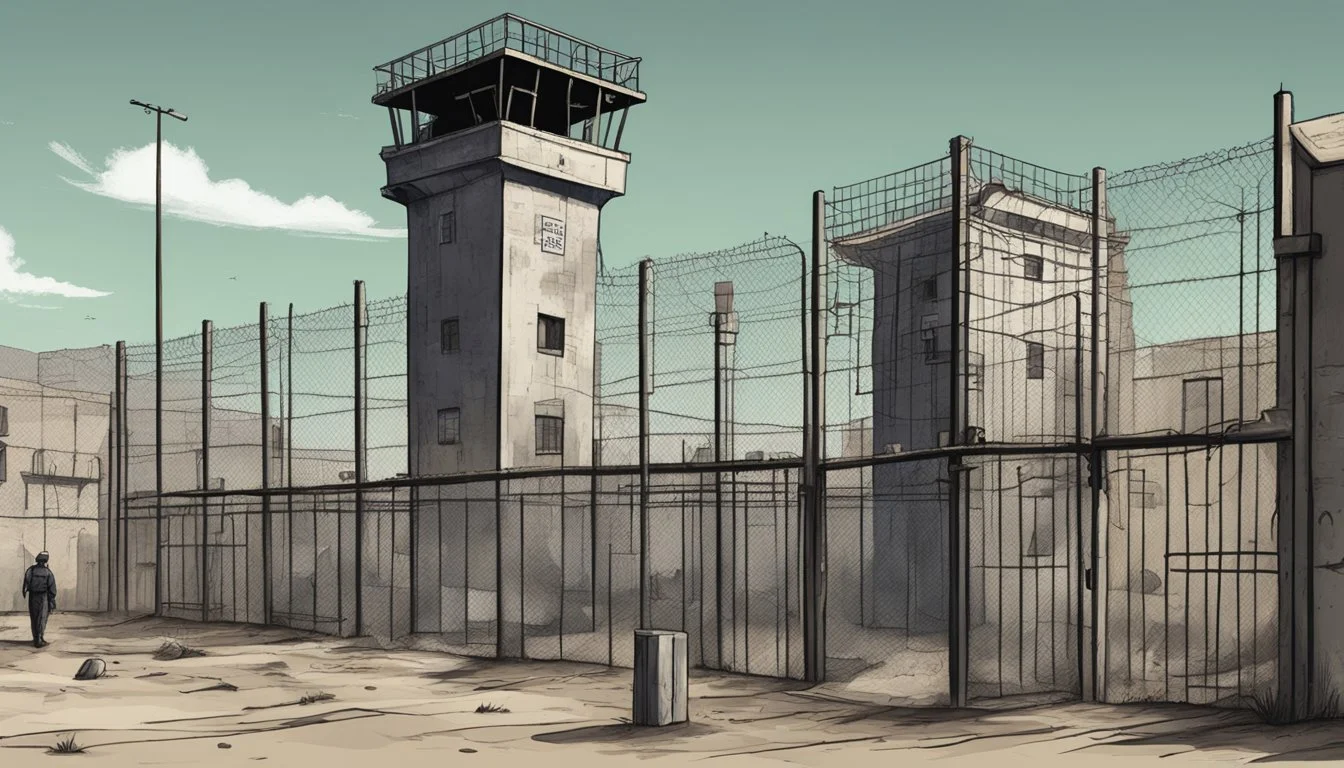Joseph Miller's South Central Sentence: Slayer's Life Term Continues as Appeals Fail
Joseph Miller, known as the South Central Slayer, terrorized Los Angeles in the late 1980s with a series of brutal crimes. His reign of terror left a lasting impact on the community and legal system. Miller continues to serve multiple life sentences without the possibility of parole for his heinous acts.
The South Central Slayer case gripped the nation and exposed deep-rooted issues within the criminal justice system. Miller's background, including his limited education and challenging upbringing, became a focal point during his trial. The sentencing of Miller marked a significant moment in Los Angeles' legal history, as the court grappled with appropriate punishment for such severe crimes.
Miller's ongoing incarceration serves as a reminder of the enduring consequences of his actions. The case has led to various community initiatives in South Central Los Angeles aimed at rebuilding trust and safety. These programs stand as a testament to the resilience of a community that refused to be defined by tragedy.
The Early Years of Joseph Miller
Joseph Miller's formative years were marked by a complex blend of influences and circumstances. His upbringing in a challenging environment set the stage for his later actions.
Birthplace and Background
Joseph Miller was born on September 2, 1964, in Harrisburg, Pennsylvania. He grew up in a low-income neighborhood, facing economic hardships from an early age. His family struggled to make ends meet, often relying on government assistance.
Miller's childhood home was a small, cramped apartment shared with his parents and siblings. The area was known for its high crime rates and limited opportunities for advancement.
His father worked sporadically as a day laborer, while his mother took on various odd jobs to supplement the family income. This unstable financial situation led to frequent moves within the city.
Influences and Upbringing
Miller's early life was shaped by a lack of positive role models and limited access to quality education. He attended underfunded local schools, where he struggled academically and socially.
His parents, overwhelmed by their own challenges, provided minimal guidance or support. This neglect left Miller vulnerable to negative influences in his neighborhood.
As a teenager, Miller began associating with a group of older, troubled youths. These relationships exposed him to petty crime and substance abuse at a young age.
Despite these obstacles, Miller showed an early interest in mechanics and electronics. He often tinkered with discarded appliances found in local junkyards, displaying a knack for technical work.
The absence of proper mentorship and opportunities to channel his interests constructively contributed to Miller's eventual descent into criminal behavior.
The Rise of a Slayer
Buffy Summers' journey from ordinary teenager to supernatural warrior defined a generation. Her growth as the Chosen One and the evolution of her heroic identity shaped the core of Buffy the Vampire Slayer.
Character Development
Buffy began as a reluctant hero, struggling to balance her calling with a normal life. Her quick wit and valley girl persona masked her inner strength. As she faced increasingly dire threats, Buffy's resolve and leadership abilities grew.
She learned to embrace her power and destiny. Buffy's relationships with her Watcher Giles, friends Willow and Xander, and romantic interests like Angel shaped her development. Her sacrifices and losses hardened her, but she retained her compassion.
Magic and mystical forces expanded Buffy's capabilities over time. She gained enhanced strength, healing, and prophetic dreams. Her fighting skills improved dramatically under Giles' training.
Evolution of Slayer Identity
The Slayer lineage stretches back millennia, with one girl in each generation chosen to battle evil. Buffy challenged this isolating tradition by building a support network. She shared her power and responsibilities with friends and allies.
Buffy redefined what it meant to be the Slayer. She rejected the Council's rigid authority and forged her own path. Her innovative tactics and modern sensibilities brought the ancient calling into a new era.
As threats escalated, Buffy stepped into a leadership role. She trained potential Slayers and devised strategies to combat apocalyptic dangers. Buffy's growth culminated in her decision to activate all potential Slayers worldwide, forever changing the balance of power.
Escalation of Crimes
Joseph Miller's criminal activities in South Central Los Angeles intensified rapidly, evolving from minor offenses to heinous acts of violence. His interactions with local law enforcement became increasingly frequent and hostile as his crimes escalated.
From Petty to Brutal
Miller's criminal career began with petty theft and minor assaults. As time progressed, his actions grew more violent and destructive. He committed his first murder in 1987, targeting 18-year-old Selina Franklin. This marked the beginning of his killing spree.
Miller's crimes became increasingly brutal. He raped and murdered multiple women in South Central LA. His victims were often vulnerable individuals from marginalized communities.
The frequency of his attacks increased, causing widespread fear in the neighborhood. Miller's methods grew more sophisticated, making it difficult for authorities to track him.
Local Law Enforcement Encounters
Los Angeles police first encountered Miller during routine patrols. Initially, they viewed him as a low-level offender. As reports of missing women multiplied, law enforcement began to suspect a serial killer was at work.
Miller evaded capture for years. He cleverly avoided leaving evidence at crime scenes. This frustrated detectives and forensic teams.
Local police intensified their efforts to apprehend the "South Central Slayer." They increased patrols and conducted extensive interviews in the community. Despite these measures, Miller continued his crime spree undetected.
The case gained significant media attention. Public pressure mounted on law enforcement to solve the murders and bring the perpetrator to justice.
Trial and Sentencing
Joseph Miller's trial and sentencing drew significant attention from the public and media. The legal proceedings unfolded amid intense scrutiny, while reactions to the case varied widely.
The Legal Proceedings
Miller faced multiple charges of murder and sexual assault. The prosecution presented forensic evidence linking him to several crime scenes. DNA analysis played a crucial role in connecting Miller to the victims.
Miller's defense team argued for diminished capacity due to his troubled background. They highlighted his limited education and childhood hardships. The trial lasted several weeks, with testimony from survivors and family members of victims.
The jury deliberated for three days before reaching a verdict. Miller was found guilty on all counts. The judge imposed consecutive life sentences without the possibility of parole.
Public and Media Reaction
News outlets provided extensive coverage of the trial. Many publications ran daily updates on courtroom proceedings. Television networks aired special reports examining Miller's crimes and their impact on South Central Los Angeles.
Public opinion was largely united in condemning Miller's actions. Vigils and memorials for the victims drew large crowds. Some community members expressed relief at the verdict and sentencing.
The case sparked debates about safety in urban neighborhoods. It also raised questions about how Miller had evaded capture for so long. Many called for reforms in law enforcement practices and community outreach programs.
Cultural and Mythological Significance
Joseph Miller's crimes left an indelible mark on popular culture and mythology. His actions inspired various artistic works and resonated with existing narratives about evil and justice.
Slayer in Literature and Media
Miller's case influenced crime fiction and true crime media. Authors incorporated elements of his modus operandi into fictional serial killer characters. True crime documentaries explored the psychological aspects of his crimes, drawing parallels to mythological figures of darkness.
Television shows like "Buffy the Vampire Slayer" drew indirect inspiration from real-life predators, including Miller. The concept of a "slayer" fighting evil resonated with audiences familiar with such cases.
Some writers compared Miller to malevolent figures from various mythologies, likening his actions to those of giants or dark gods in ancient tales.
Real-life Echoes in Fiction
Miller's crimes found echoes in urban legends and modern folklore. His story became intertwined with cautionary tales told in South Central Los Angeles.
Contemporary authors used Miller's case as a backdrop for exploring themes of good versus evil. Some works reimagined him as a supernatural entity, blending fact with elements of fantasy.
Artists created visual representations inspired by the case, often incorporating religious or mythological symbolism. These works sparked discussions about the nature of evil in society.
Miller's story also influenced academic discourse on criminal psychology and societal responses to violence.
Reflections on Justice and Society
Joseph Miller's case raises profound questions about criminal justice, societal values, and the possibility of rehabilitation. It challenges assumptions about punishment and redemption in American society.
Examining Legal Outcomes
Miller's life sentence without parole highlights ongoing debates in the U.S. justice system. The Supreme Court ruling in Miller v. Alabama banned mandatory life sentences for juvenile offenders. This decision recognized young people's capacity for change and rehabilitation.
However, adult offenders like Miller still face extreme sentences. Critics argue life without parole is inhumane and fails to account for personal growth. Supporters claim it ensures public safety and provides closure to victims' families.
Some states have implemented "second look" laws. These allow for sentence reviews after a set period. Such reforms aim to balance justice with the possibility of redemption.
Societal Implications
Miller's case reflects broader societal issues. It raises questions about the purposes of incarceration - punishment, deterrence, or rehabilitation. The USA's high incarceration rate has sparked calls for reform.
Educational opportunities in prisons can reduce recidivism. Some argue these programs are crucial for offender reintegration. Others see them as rewarding criminal behavior.
Cultural attitudes toward crime and punishment vary. Some communities emphasize restorative justice. Others favor stricter penalties. These differing views shape political debates on criminal justice reform.
The concept of civilized society often includes notions of justice and mercy. Balancing these ideals remains a challenge in modern legal systems.
Continued Impact and Legacy
Joseph Miller's crimes left an enduring mark on South Central Los Angeles. His actions sparked changes in law enforcement practices and influenced cultural narratives about serial killers.
Influence on Crime Prevention
Miller's case prompted local police to revamp their investigative techniques. They implemented new DNA testing procedures and improved evidence collection methods. Community policing initiatives expanded, with officers working more closely with residents to build trust.
Neighborhood watch programs surged in popularity. Schools introduced safety education courses, teaching students about situational awareness and self-defense. Local government funded improved street lighting and security cameras in high-risk areas.
These efforts contributed to a measurable decrease in violent crime rates in the years following Miller's conviction. The changes also served as a model for other cities dealing with similar challenges.
Ongoing Cultural Reception
Miller's crimes continue to captivate public interest. True crime documentaries and books regularly feature his case, analyzing his motives and methods. These works often highlight the resilience of the South Central community in the aftermath of his reign of terror.
Some artists have created works inspired by the case, using it as a lens to explore broader themes of justice and urban life. However, these portrayals remain controversial, with critics arguing they risk glorifying Miller's actions.
Local memorials honor Miller's victims, serving as somber reminders of the lives lost. These sites have become gathering places for community events focused on violence prevention and healing.







